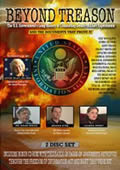STEALING
THE WORLD
PART 1 of 4
By
Jon Christian Ryter
May 13, 2009
NewsWithViews.com
When Sen. Barack Hussein Obama started campaigning for the White House in December, 2007, he promised the voters two things. Universally, he promised change. He never specified what that promised change was going to be, or who would benefit from it. But change of any type seemed to be good enough for an electorate—Democrats and Republicans alike—since everyone seemed to be tired of eight years of George W. Bush and Dick Cheney. Second, when he addressed the 99th Annual Conference of NAACP on July 14, 2008 Obama told the assembled audience: "Social Justice is not enough. It matters little if you have the right to sit at the lunch counter if you can't afford the lunch. But the Supreme Court never ventured into the issue of redistribution of wealth and...[the]...issue of political and economic justice in this society...[T]he Supreme Court interpreted in the same way that the Constitution is a charter of negative liberties. It says what the States can't do for you. It says what the federal government can't do to you. But it doesn't say what the federal government or State government must do on your behalf." Obama then promised to return to the NAACP's 100th Anniversary Conference to declare that the redistribution of wealth was taking place.
I'm not quite sure the NAACP is particularly pleased with the type of the redistribution that has taken place thus far since that's not exactly what they had in mind when Candidate Obama talked about sitting at the lunch counter but not having the price of a meal. The redistribution they had in mind would be more like robbing the taxpayers to provide affluence to the have-nots—particularly the have-nots whose ancestors may have been slaves.
Instead, the first act of Obama's "change," like the final curtain call of Bush-43's low-rated 8-year run of The Court Jestor, opened the door at the US Treasury and invited the US auto industry to drive-through and pick up a $25 billion low-interest loan, followed by the corporate begfest in which the Big Three returned for an additional $25 billion "stimulus" to keep them from going bankrupt.
In the end, Congress shelled out $15 billion more for a total of $40 billion. Pocket change. From our pockets to the pockets of the princes of industry and the barons of banking. Congress, acting like Robin Hood, used a reverse form of theft with their accomplices in the banking community who played the role of the Merry Men, robbing the poor to benefit the rich. Obama added a new dimension to the concept of corporate welfare by demanding partial ownership (i.e., nationalization) of those corporations that accepted any stimulus money (i.e., corporate welfare). In the case of the banks who received taxpayer money, Obama forced them to collateralize their "loans" with nonvoting high yield preferred stock.
The Treasury is now demanding that the banks who received the bailout money exchange the preferred stock they put up as collateral for voting shares. Obama wants a voice in the management of the nation's 19 largest banks. The reason? Obama personally wants to control who sits on the boards of those banks. Why should that be important to him? Because the bankers and the politicians control the price of everything. During the turbulent 1920s joblessness in Germany grew from 2.25 million in 1930 to 6 million in 1932. The value of the mark collapsed. In 1918 a pound of potatoes in Germany cost 1/8th of a Mark. In Nov. 1923 that same pound of potatoes cost 50 billion Marks. One egg that cost 1/4th of a Mark in 1918 cost 80 billion Marks in 1923. Butter was a luxury that only the rich could afford in 1923. One pound of butter cost 3 Marks in 1918. It took a wheelbarrow containing 6 trillion Marks to buy a pound of butter in Nov., 1923.
The American banking system, which managed to weather Obama's first tsunami—an attempt on his part to wrest managerial control of the banks from the bankers by insisting they switch the high dividend-yield, nonvoting preferred stock they pledged as collateral for the bailout loans into common stock which pays no dividends but is voting stock. With the shares the government "owns" until the loans are repaid, they will virtually control who sits on the boards of these banks.
On Thursday, May 7, the Treasury announced the results of the government's hypothetical stress test on the financial well-being of the nation's 19 largest commercial banks. All of them, according to the government, will need billions of additional dollars of funding in the first couple years of the next decade if economic conditions worsen in the United States. In their hypothetical, the government predicted a 25% credit card default rate when the worst five year credit default rate (during the Carter Era) was 5%. Clearly, the government's worse case scenario was structured to make all of these banks appear to be in much worse shape than they actually are. And the banks are troubled by what he's doing. Increasingly, the bankers are beginning to fear Obama. The reason? It appears that Obama is determined to coerce the bankers into signing on to the his economic agenda—whatever it is. But, when the White House begins to threaten the bankers who helped put him in office, it should be starting to dawn on the working class voters that it won't be good for them.
In 1921, former army corporal, political opportunist and wallpaper hanger Adolph Hitler was known only by a handful of political dissidents in Austria. Less than 3% of the disgruntled voters in 1928 voted for the National Socialist Party in Germany. No one viewed Hitler as anyone who could solve the difficult economic issues of the day. And, that was after seven years of what was almost blitzkreg-level propagandizing by the Nazis. Hitler's only followers came from the far right in Germany and Austria. Only those who felt completely disenfranchised and utterly disillusioned by the Weimar Republic chose to follow Hitler, believing his promise of change, but never questioning what types of change he would make. Like the American far right today, Hitler exploited the backward-looking ultra-conservatism of a bygone era with that magic word—"change." Those who followed Hitler, like the far left that follows socialist Obama, saw and heard what they wanted to see and hear in the messianic message of der Fuehrer. Change meant whatever each starry-eyed follower wanted it to mean.
After struggling for political power as an insignificant fringe party candidate in the turbulent '20s, Hitler realized that to wrest power from the rich gentry, he needed the secure the support of those he intended to overthrow. Particularly the bankers and the industrialists who controlled both money and jobs. Hitler, like Obama, came to power in turbulent times (even though the crisis that brought Obama to power was contrived by greedy, graft-infected politicians, industrialists and bankers for the express purpose of toppling not only a nation but the monetary systems of the world's failing nation states). But unlike Obama who has a Congressional super majority at his beck-and-call, Hitler's Nazi Party was a minority in the Reichstag. But, he had a plan how to parlay his seat in the Reichstag to the presidency of Germany. Banker Hjalmar Schacht who, as Germany's Commissioner of Currency was tasked, in 1923 with creating a solvent new currency to replace the Reichsmark that was being decimated by the hyperinflation that destroyed the German economy.
Schacht, believed to be the best monetary mind in Germany, wanted to head the Reichsbank. However, during World War I, as the Army's banking commissioner for occupied Belgium, Schacht funneled Belgium notes of remittance worth 500 million francs to his former employer, the Dresdner Bank. Gen. Ludwig von Lumm fired him and, when the job as head of the Reichsbank opened in 1923, von Lumm killed Schacht's chances of getting it. Hitler promised Schacht the job if he became President of Germany. Schacht became Hitler's money bagman, leading other bankers and their money to the Nazis. One by one, Germany's most important banking families threw their support behind Hitler. Next came the industrialists. (Schacht was tried for war crimes in Nuremberg in 1946 but his guilt was not established beyond a reasonable doubt and he was not convicted of war crimes. Photo of Schacht [above] was taken during the Nuremberg war crimes tribunal.)
Those who are watching close enough cannot fail to see the historic parallel. When Obama decided to coalesce with the leaders of the failing US auto industry—the only group desperate enough to take taxpayer money with strings of steel they would never be able to break, he did what Hitler did when he made his historic deal with Georg von Schnitzler, an ambitious member of I.G. Farben's board of directors. Schnitzler became the proverbial scapegoat that led other German industrialists into the Nazi fold. Under Hitler, Schnitzler quickly became CEO of Farben and was among the first to greedily exploit the human capital in the concentration camps. (Schnitzler, industrialists Otto Wolf, August Rosterg, and Albert Voegler of United Steel Works, were among the early industrialists that supported Hitler with their checkbooks—and their influence. They were among 22 industrialists who faced war crimes charges for using the slave labor in the concentration camps.) Schnitzler, who became the Third Reich's Economic Minister, was an SA officer and Nazi Party official. Yet, he served only 2.5 years of his five year prison sentence at the end of the war. Hitler could not have achieved absolute, dictatorial power in Germany without the help and influence of the industrialists and bankers. Think about that when you watch the White House waltz with the bankers and industrialists. When government sticks its authoritarian hand into the free enterprise system, expect a recession, a depression...or worse.
Obama has already begun to move in that direction. In the privacy of the Oval Office Obama has not hesitated to threaten to destroy the careers of the bankers and auto industry executives who interfere with the White House's plans for those who accepted bailout money. Tom Lauria, a lawyer for one of the hedge fund creditors of Chrysler, Perella Weinburg, told ABC News that Steve Rattner, the head of Obama's auto industry task force threatened to destroy the career of his client, an investment banker who opposed writing off most of Chrysler's debt. When the story broke, the White House denied it. On the talk show circuit, Lauria insisted that Rattner called Weinburg and warned him that if he did not lower his expectations of what his company was entitled to expect from a bankrupt Chrysler, the White House Press Corps would destroy him—and his bank. When Rattner hung up, Weinburg backed off his initial demands that Chrysler pay its debt to his company, leaving his lawyer with egg on his face. The law firms used by America's investment bankers are not loose cannons who go on political talk shows and make spurious statements about the White House.
Mistakes like that are career-enders. Why is the White House using Gestapo tactics? First, Obama promised the United Auto Workers controlling interest in Chrysler and GM. Even though the union denies it, they will get a 55% stake in Chrysler including a seat on the restructured company. Control of 55% of the voting stock allows the UAW to pick the officers of the company. If rank and file UAW members feel good about this scenario, they need to rethink what is about to happen. Their advocates for increased wages and benefits will have become the adversary in the negotiations for increased benefits demands.
|
Subscribe to the NewsWithViews Daily News Alerts! |
The UAW and the other unions that represent GM employees around the world will get 39% of the stock of General Motors. In both auto companies, the unions will partner with management. Rhetoric aside, even if it looks like a sweetheart deal to rank and file union members today, ultimately, the only adversary left the corporate partnership of labor and management to fight will be the workers. Clearly, this deal happens only if the bankruptcy court agrees. And, that will only happen if the auto industry creditors agree. For part two click below.
















